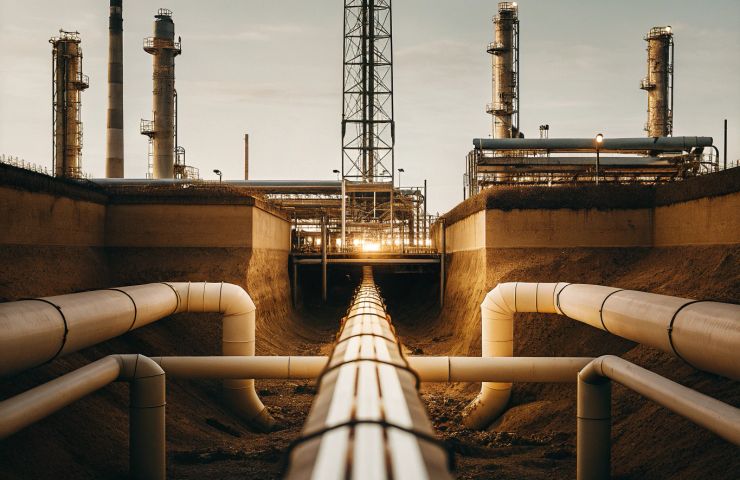
Hydrogen Infrastructure: Air Liquide Pours $50M into Gulf Coast Pipeline Upgrades
October 10, 2025Air Liquide is making a bold move, dropping $50 million into a facelift for its hydrogen pipeline network along the U.S. Gulf Coast. They’ve locked in fresh, long-term supply deals with two of the area’s top refineries, and every bit of gear—from new compressors to beefed-up lines—is tethered back to the Spindletop cavern storage hub in Texas. This isn’t just painting the pipes; it’s about cranking up delivery capacity, dialing in flexibility, bolstering reliability, and future-proofing their hydrogen infrastructure as industries step up the push on industrial decarbonization. By tackling these upgrades now, they can sidestep bigger costs down the road, avoid extra environmental headaches, and keep pace with surging demand for sustainable energy.
Key Takeaways
- Investment amount: $50 M earmarked for a wide-ranging overhaul—reinforcing pipeline integrity, installing state-of-the-art compressors, and upgrading distribution gear.
- Infrastructure focus: Reinforcing aging pipelines, deploying state-of-the-art compressors, and modernizing distribution terminals with quick-connect skids for nimble scaling.
- Strategic link: Direct connection back to the Spindletop underground cavern in Texas, a heavyweight in hydrogen storage with over 1.5 billion cubic feet in reserve.
- End users: Secured rock-solid, multi-year offtake agreements with two of the Gulf Coast’s largest refiners to guarantee steady supply.
- Goal: Strengthen hydrogen infrastructure reliability today while laying the groundwork for tomorrow’s large-scale industrial decarbonization initiatives.
At its core, this program aims to feed the skyrocketing appetite for hydrogen across refining and petrochemical processes—think hydrocracking, desulfurization, and other hydrogen-hungry steps in chemical manufacturing. Rather than carve out brand-new routes, Air Liquide is refreshing what’s already there, trimming capex, slashing permitting timelines, and minimizing environmental disruption. You could call it a shrewd brownfield approach: less ground-up construction, more pinpoint upgrades that dial up throughput while staying nimble in a market that just won’t quit growing.
Tech Focus
This overhaul leans on two tech superstars: next-level, high-pressure pipeline integrity upgrades and state-of-the-art compression systems. Crews will blast old lines clean, then recoat them with advanced steel alloys and corrosion-resistant coatings designed to handle supercharged flow rates. New compressor stations get eco-friendly, energy-efficient motors, integrated with smart control systems and real-time monitoring to hold hydrogen at pressures up to 1,200 psi. Distribution hubs aren’t left behind—they’ll sport modular skids for rapid capacity shifts, leak-detection sensors, and remote diagnostics. Altogether, these tweaks boost linepack flexibility, so refiners have round-the-clock access to reliable hydrogen supply. Plus, predictive maintenance algorithms will flag issues before they escalate, cutting downtime and keeping throughput humming.
Strategic & Economic Impact
This isn’t just another infrastructure upgrade—it’s a play for dominance in the Gulf Coast, the engine room of U.S. refining. With the region hosting over 40% of national refining capacity and cranking out nearly half of the country’s fuel, securing multi-year hydrogen offtake agreements with two of its biggest refiners gives Air Liquide serious bragging rights. Those long-term deals translate into predictable, renewed revenue streams that smooth out earnings and unlock capital for future low-carbon hydrogen production ventures. Meanwhile, refiners benefit from stable, fixed-rate contracts, insulating them from price swings and simplifying budgeting in a notoriously volatile market.
Environmental & Decarbonization Angle
Even though the upgrades will initially carry grey hydrogen—sourced from fossil fuels—the beefed-up network is ready to handle low-carbon and green alternatives down the road. As regulations clamp down and carbon costs bite, industries will need cleaner molecules—quick. By fortifying the pipeline backbone now, Air Liquide is laying the rails for an easy pivot to decarbonized hydrogen via electrolysis or SMR paired with carbon capture, driving broader industrial decarbonization and boosting the push toward sustainable energy.
Regional & Historical Context
The Gulf Coast’s energy story goes way back—to the 1901 Spindletop blowout that lit the fuse under the Texas boom. Fast forward, and today’s sprawling network of refineries and chemical parks still leans heavily on hydrogen for critical processes. Air Liquide has been in the mix for decades, running one of the world’s most extensive hydrogen pipelines, all centered on the Spindletop underground cavern. That single facility can hold over 1.5 billion cubic feet of hydrogen—enough hydrogen storage to smooth out seasonal demand swings and shore up supply resilience when markets shift.
Looking Ahead
As energy teams sketch out their 2030-and-beyond decarbonization roadmaps, hydrogen’s going from optional to absolutely critical. A reliable, flexible supply won’t just be nice to have—it’ll be non-negotiable. With this $50 M push, Air Liquide is banking on being front and center when greener, low-carbon hydrogen hits scale. Keep your eyes peeled for fresh announcements on joint ventures in electrolysis-based hydrogen production, carbon capture integrations at refineries, and maybe even more cavern expansions for added buffer. For now, this boosted pipeline network is the sturdy backbone that will host the next wave of sustainable hydrogen plays.
About Air Liquide
Air Liquide, founded in 1902 and headquartered in France, is a global leader in industrial gases and services, with a particular edge in R&D for clean solutions. The company supplies hydrogen, nitrogen, oxygen, and specialty gases across energy, chemicals, manufacturing, healthcare, and more. Along the U.S. Gulf Coast, Air Liquide operates one of the world’s most extensive hydrogen pipeline networks, anchored by the Spindletop cavern storage facility. That infrastructure backbone underscores its pivotal role in advancing hydrogen infrastructure and hydrogen storage for a low-carbon tomorrow.



 With over 15 years of reporting hydrogen news, we are your premier source for the latest updates and insights in hydrogen and renewable energy.
With over 15 years of reporting hydrogen news, we are your premier source for the latest updates and insights in hydrogen and renewable energy.